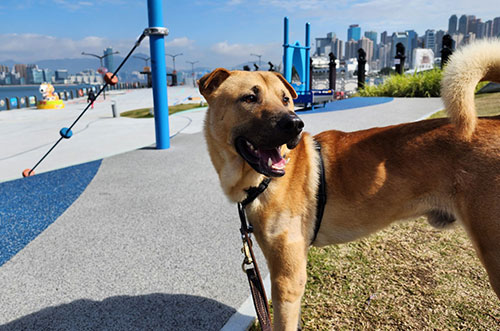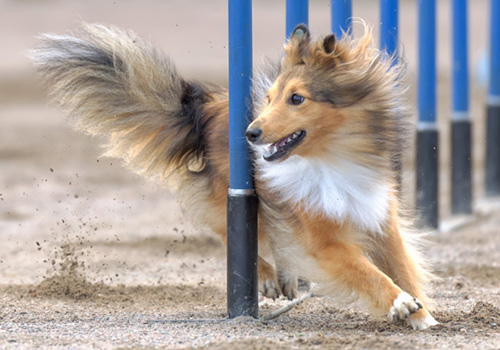
You might think these traps don’t affect you but in 2020 alone, our inspectors found a record 29 illegal animal traps, with seven of those being on well-frequented country park trails and sites!
Christmas day is usually a happy time for most, but for a young dog named Franco, who was caught by an illegal wire trap in Ta Kwu Ling on Christmas Day last year, he was alone, injured, and scared.
The poor pup was lured to the area by bags of bread when he unintentionally set off the traps whilst scavenging for a decent Christmas meal.
Sadly, this isn’t a stand-alone case. Many unfortunate animals may need to have a limb amputated if the damage is too severe or their limbs have been trapped for too long as this can cause irreversible damage.
In fact, our inspectors have been rescuing animals from these illegal traps over the years but there has been a marked increase in recent years.
Who’s been setting these up? What are these people trying to catch, and what’s being done about it?
We sit down with our inspectors to learn more about these illegal and inhumane traps.
What are illegal traps?
There are a variety of illegal traps, often tailor-made to trap a particular type of animal such as snakes, turtles, or wild boars.
The most common types are:
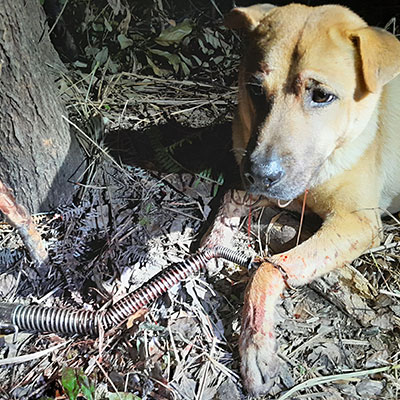
Wire traps
Snares animals with a wire loop (like in Franco’s case)
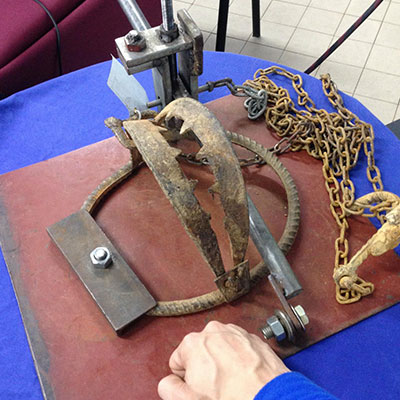
Gin traps
The leg-hold traps with metal jaws are triggered when an animal steps on them
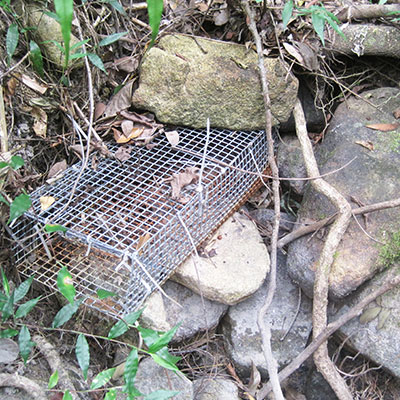
Cage traps
Looks like an enlarged mouse cage trap
Possession or use of any animal traps without authorisation is illegal under Cap. 170 Wild Animals Protection Ordinance. In addition, many are cruel and cause dreadful suffering and are likely to cause injury or death as a result.
Who is setting these traps? And where are they commonly found?
As it has been difficult to determine the culprit laying these traps, it is suspected that these traps are laid to capture wild animals for consumption during the cooler months as the propensity of these reports takes place between autumn and spring.
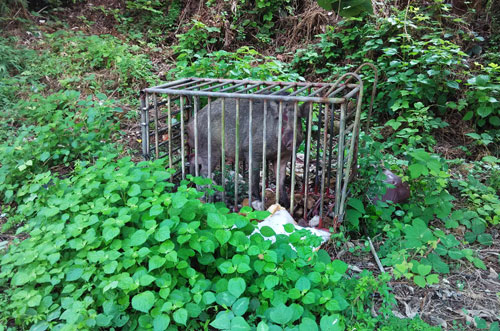
The traps have usually been set near graves, farmlands, or in undergrowth so it is also possible that these are being set by villagers to protect the graves and farmlands from the invasion of animals, like wild boars, and to target animals that usually show up in the undergrowth.
It has also been suggested that the increase in reports correlates to the number of people hiking during this time or that the cooler months enable perpetrators to set these traps more comfortably.
Has anyone been prosecuted?
Unfortunately, it is difficult to catch these perpetrators in action. Out of the 227 cases our inspectors have dealt with since 2007, only one case was successfully prosecuted in 2016, when a man was found in possession of illegal traps and bodies of wild animals in his Kwai Chung village house.
- Offenders can face a maximum fine of HK$200,000 and three years imprisonment if convicted of animal cruelty resulting from the use of traps.
- Hunting or trapping animals without a permit can result in a maximum fine of HK$100,000 and a year’s imprisonment whilst possession of traps alone can result in a maximum fine of HK$50,000.
What should you do if you come across one of these traps or an injured animal?
Call our inspectors! Do not touch or attempt to free the animal from these traps yourself as you risk hurting yourself and the injured animal further.
You may attempt to provide shelter and water to relieve the animals until our inspectors arrive. However, if the animal appears distressed, it is best to keep your distance to avoid further stressing the animal.
Our inspectors work 24/7 to respond to animal abuse reports and rescue distressed animals in all weather conditions. They are professionally trained to handle a wide range of animals, and dismantle these illegal traps safely, and will liaise with AFCD to follow up on each case afterwards.
What can you do to protect your own pets whilst out exploring?
1
Always leash your dogs
2
Beware of food that has been left out – these may be used as bait, and illegal traps are likely nearby
3
Always walk along hiking trails, and don’t go into the undergrowth
Report to the SPCA at once by calling
our 24-hour inspector hotline 2711 1000
Include details of trail location such as: Nearby slope number, High-mast light pole number, Cable mast number, what3words, GPS tag These details will help the rescue team know the exact location to rescue the animal. Do not post on social media directly as such disclosure could affect rescue efforts and evidence collection.
Where is Franco now?
Our sweet, lovable boy is still looking for his happily ever after! If you would like to share your Christmases with Franco, visit him at our Hong Kong Centre and quote PN 541907.
